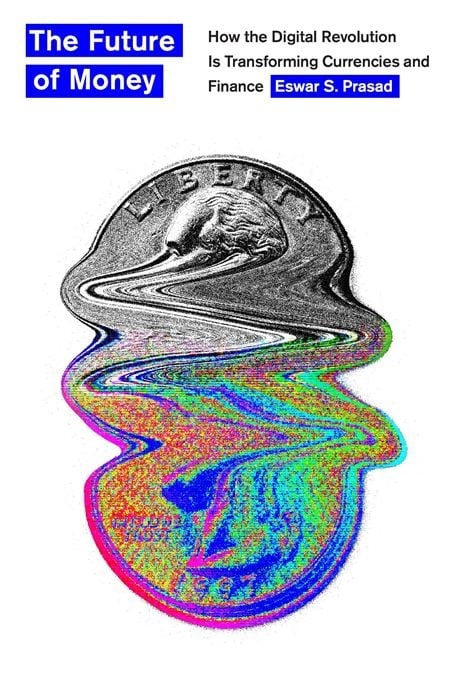The history of money is filled with conflict and competition. In some cases, bloodshed. In 13th-century China, for instance, Genghis Khan institute
The history of money is filled with conflict and competition. In some cases, bloodshed. In 13th-century China, for instance, Genghis Khan instituted what some consider to be the world’s first paper money. It was forced legal tender for all debts under his domain, backed by the Grand Khan’s decree, and the punishment of death.
“Is this true for all fiat currencies?” Eswar Prasad, a professor of trade policy at Cornell University, asks in his latest book, “The Future of Money: How the Digital Revolution Is Transforming Currencies and Finance.” If it was before, it likely isn’t now.
Money is changing, Prasad notes. Cash is slowly being phased out. Digital representations of dollars are on the rise. Cryptocurrencies are laying down roots. Money, in short, is becoming more voluntary. There are more choices in how to spend money – there are credit cards and mobile payments – and even more choices about what money to spend.
“We’ve certainly come to an era now where private currencies are in real competition with central bank currencies,” Prasad told CoinDesk in a video interview.
A large part of Prasad’s book considers how central banks will deal with this monetary revolution. The major trendlines, of private companies creating their own money, the rise of open-source crypto projects, the fintech stack, have not even begun to play themselves out.
To stay relevant, governments around the world will likely issue their own central bank digital currencies (CBDCs). This might be the most significant monetary event of all, which will have far-reaching consequences at every level of society.

Money will never have been more transparent, more programmable, more technocratic. In his evenhanded account, Prasad notes how CBDCs might give banks a run for their money as well as improve market access for the financially underserved. But they won’t solve every issue – like the perennial debate between security and privacy (more on that later).
Read more: CBDCs Can Stop Aid Falling Into Terrorist Hands | Netta Korin
It’s an ambitious book, covering the diverse landscape of digital money, and one that will remain relevant for years to come. That’s quite a feat considering the quickly changing nature of this field. Who can fault Prasad’s attention on Facebook’s proposed digital currency, libra (now renamed diem)? Indeed, the world is undergoing a monetary revolution, where kings rise and fall in a matter of days. Let’s be happy it’s less severe than Genghis Khan’s fiat.
CoinDesk caught up with the author to discuss Bitcoin’s legacy, the problems with CBDCs and more recent events that might make the history books. The interview has been lightly edited and condensed.
You wrote a book called “The Future of Money.” Just to start, in a decade will there be more or fewer currencies?
I suspect there is going to be a winnowing out of currencies. When money first came into being, it was largely private currencies circulating. With the establishment of central banks, private currencies were essentially driven out of business by government-issued currencies. We’ve certainly come to an era now where private currencies are in real competition with central bank currencies.
But in the world of decentralized and centralized cryptocurrencies, I think we are going to see a winnowing, which will leave a few decentralized ones and, more importantly, some centralized ones to continue competing with central bank currencies, at least as mediums of exchange.
Do you expect something like the digital euro or yuan would cause consolidation among state-backed currencies?
In countries that are small, or where the central banks themselves are not that credible, and where their currencies suffer from a lot of volatility or possibly inflation or hyperinflation, the easy availability of digital versions of major currencies such as the dollar, the euro or even the Chinese renminbi, or even stablecoins issued by corporations such as Facebook, could lead to the decimation of some of the smaller currencies.
Many of these currencies already live in the margins of viability, because their central banks are not seen as very trusted. So if you have these digital currencies, either government-issued or private, easily available for the citizens of some of these countries, you can well see them displacing their local currency.
Libra, now diem, features prominently in your book. The original vision was battered beyond belief, but the project isn’t necessarily dead on arrival. Will another private company ever attempt to do something of that scope?
Diem was noble in its objectives. It’s a more efficient fiat currency that could bring low-cost digital payments to the masses and create a low-cost efficient payment system for cross-border transactions that are cheaper, quicker and easier to track. I think those are very worthy objectives.
Read more: Diem: A Dream Deferred? | Opinion
And certainly there is a fundamental need even in…
www.coindesk.com
